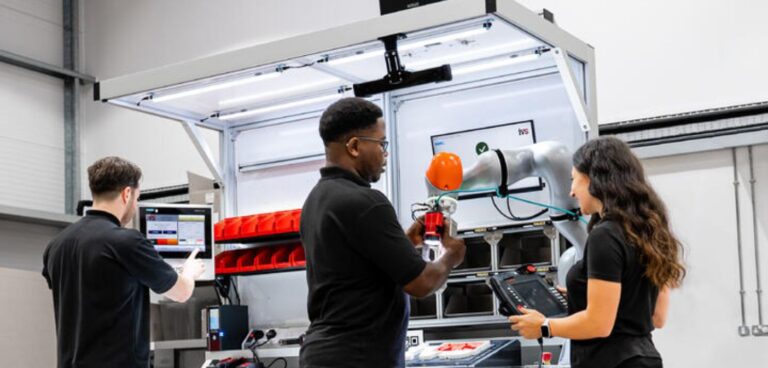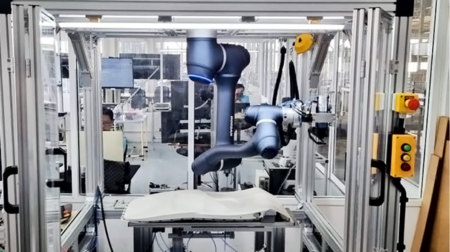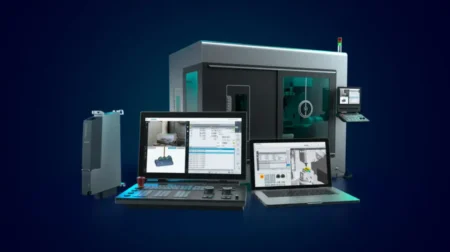Industrial Vision Systems Ltd (IVS), a global supplier of inspection machines and industrial automation solutions, has developed a smart workbench for technological demonstrations in collaboration with one branch of the University of Sheffield Advanced Manufacturing Research Centre (AMRC), AMRC Cymru.
The workbench was designed to combine a mixed reality headset, smart tooling, 3D and 2D machine vision, seven-axis robotics, intelligent projection, pick-to-light and automation into one complete demonstration cell.
The purpose of the bench is to demonstrate combined uses of these technologies in a one-stop demonstration cell, which can be used for research and development.
IVS used a combination of the mixed reality environment with disparate tools and robotic assembly build, providing a step-by-step process control for an engineer to follow.
With the mixed reality unit being an integral component, IVS has developed a template for an immersive inspection environment to assist users. AMRC Cymru will then use the collected data to explore potential applications of such tech combinations in future manufacturing settings.
Earl Yardley, director of Industrial Vision Systems Director, said: “We’re very excited about the work we have completed with AMRC Cymru.
“We see the increased use of mixed reality combined with industrial automation and machine vision as a pivotal technology for next-generation factories.
“Imagine operators with physical items around them, such as components and assemblies, but with the ability to also interact with digital content, such as a shared document that updates in real-time to the cloud or instruction animations for assembly.
“That is, in essence, the promise of mixed reality.
“It’s an incredibly exciting technology for future production environments.”
The workbench was also developed to combine both 2D and 3D machine vision. By generating a point cloud of information, 3D machine vision lets the vision system inspect and confirm positional off-sets with the robot, facilitating the automated inspection of complicated assemblies, subassemblies and individual components.
Working with a collaborative seven-axis robot arm, this enables parts to be assembled on the workbench. This, the two organisations claim, is an essential area of research for future manufacturing settings as it can be paired with the pick-to-light system for full human-robot collaboration.
Andrew Silcox, research director at AMRC Cymru, said: “We are delighted to be working with IVS to develop smart workstation applications for our industrial partners.
“AMRC Cymru believes that smart workstations equipped with collaborative robot technologies will be a key component of our future factories as they enable us to merge the productivity and repeatability of automation with the adaptability and dexterity of a human.”
What’s more, the smart workbench also includes operator traceability and security with RFID (radio-frequency identification) tags, which AMRC says helps the bench to adjust to the operator’s height and store data against the operator ID.
This is connected with the factory information system at AMRC Cymru and to AMRC’s bespoke Factory+. This, AMRC claims, demonstrates how data exchange to factory information systems, and clear human-machine interfaces, could be useful for future smart factory technologies.








